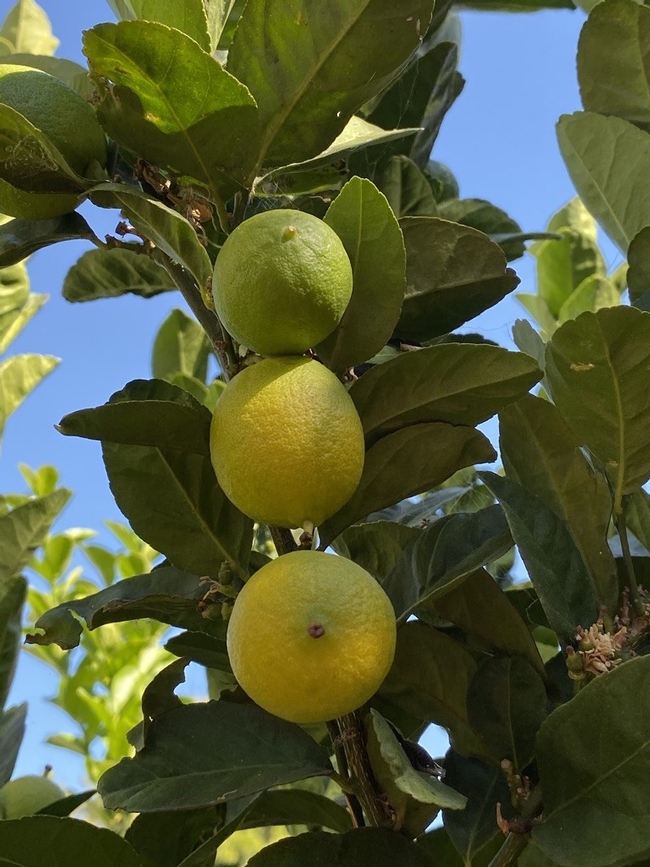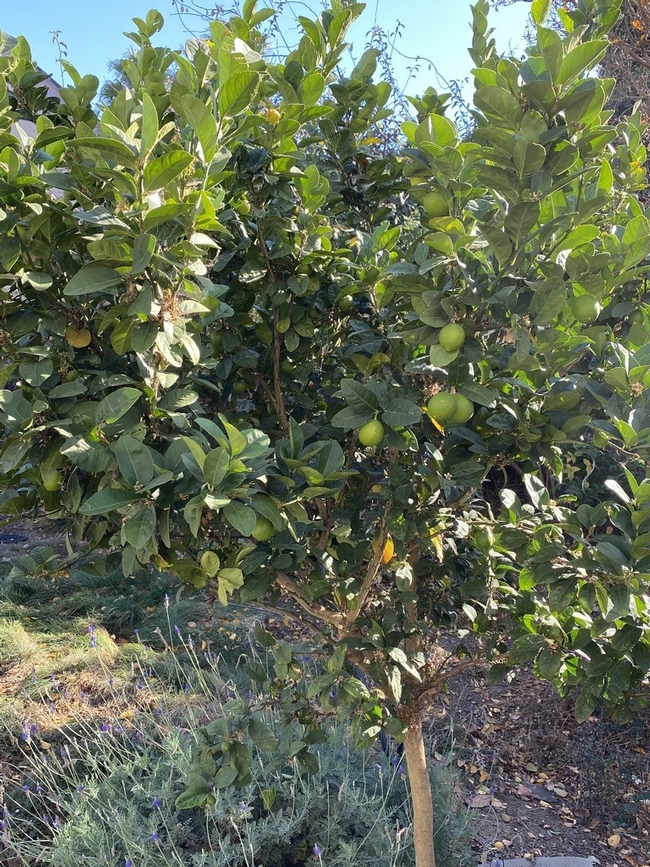Mexican Thornless Lime
“I consider every plant hardy until I have killed it myself.” – Sir Peter Smithers
“Don't do it,” the nurseryman said as I wistfully admired the Mexican lime tree. “They are too frost-sensitive for our area.” So I didn't buy the tree. At least not then.
Years later, when redoing the backyard, I decided to take the plunge. Although I had a Bearss lime in the front yard, it wasn't thriving in its windswept location. Plus, I was still intrigued by delicious, cute, little fruits produced by the Mexican lime.
The Mexican lime (Citrus aurantifolia) is known by many names, including Key lime, bartender's lime, and West Indian lime. The limes are juicy, aromatic, and flavorful. Some plants are thorny, while other selections are thornless. I have a small yard, so I selected a thornless Mexican lime to avoid having to dodge thorns when I brush past the plant. As with many citruses, the white blossoms are fragrant. The green to yellow-green fruits are smaller and rounder than the usual grocery store limes, growing to approximately 1 to 1.5 inches in diameter. Once the limes ripen, in fall to early winter, they turn yellow and drop from the tree. In my yard, the tree typically produces most heavily in October and November, but it seems like I can pick a lime almost any time of year.
The trees are moderate growing, to 12 to 15 feet tall and 6 to 8 feet wide. I planted a standard because it would take less room. The tree is still young and well-behaved, which is good because it is planted a little too close to our deck. So far, it has done well with pruning.
The Mexican lime has a more limited growing range than other limes and is very sensitive to cold. It is suited to USDA hardiness zones 10 and 11 (for example, southern California).[1] Here, in zone 9, it is pushing the limit for the plant. The Mexican lime cannot tolerate freezing temperatures and starts to incur frost damage at 32 degrees. Since I live near the water in Benicia and temperatures are relatively moderate in the winter, I was willing to gamble. I have non-LED Christmas lights strung through the tree in case of frost and am ready to take other measures to protect the tree if temperatures really dip. In inland areas of Solano County, however, the Bearss lime is a better choice.
Although I know I can lose the tree in a hard frost, I've really enjoyed the fragrant leaves and blossoms and tart fruit. I'm glad I took the chance!
[1] The USDA's plant hardiness zone map can be found at https://planthardiness.ars.usda.gov/PHZMWeb/.

photos by Erin Mahaney

mex thornless lime

